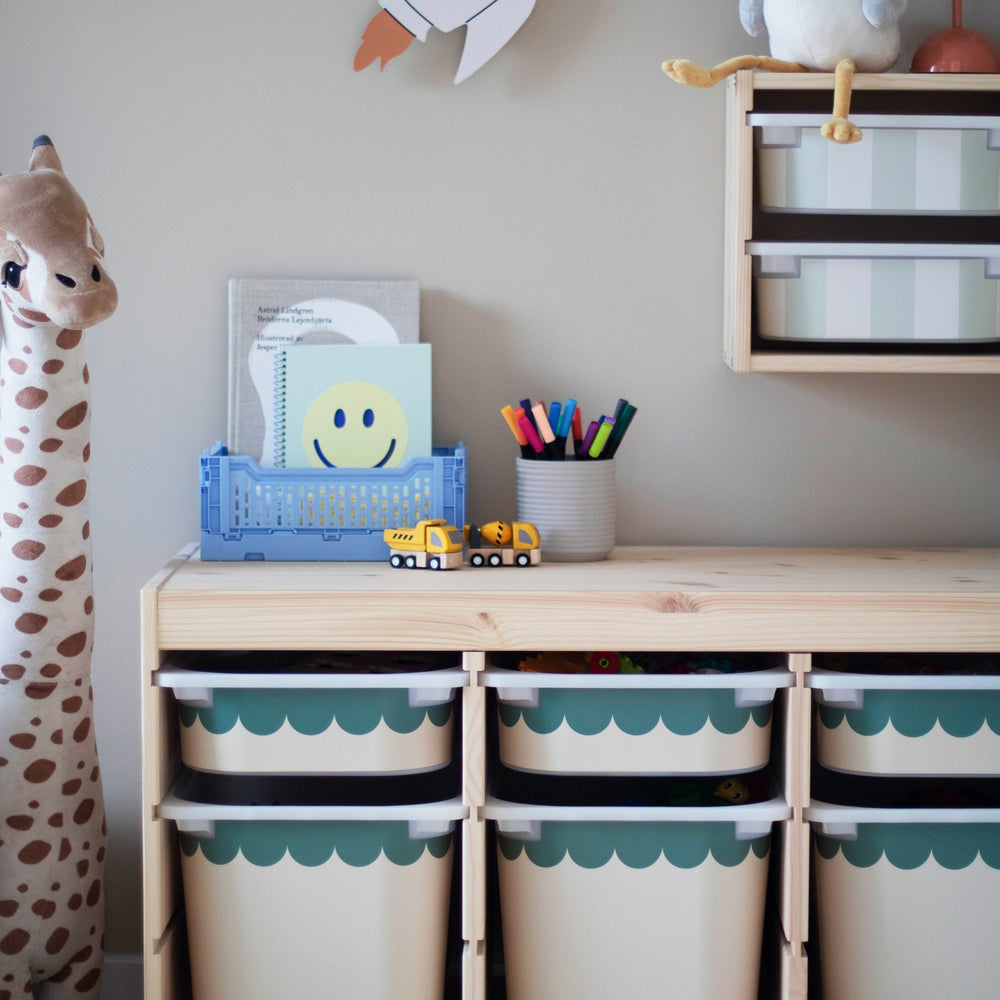Decorate your children's room - 5 clever ideas!
Decorating a children's room can be both fun and challenging. The room should function as a place for play, rest and development, while being easy to adapt when the child's interests and needs change.
In this article, we share practical decorating tips for children's rooms - advice we wish we'd had with us from the start! Through smart storage, flexible design and child safety, you create a children's room where the child can thrive and grow. Here are our most important tips for decorating a children's room that works over time!

1. Clever ideas for storage in the children's rooms
Storage in the children's room is often the biggest challenge. As the child grows, so does the amount of toys and gadgets, especially after birthdays and Christmas. Plan storage from the start by using beds with storage space or drawers underneath, as well as wall-mounted shelves to free up floor space for play. Combine open and closed storage – for example, nice baskets and drawers for small things – to create an inviting children's room.
Tip: Place toys and books at child-friendly height so that children can take them out and put them away themselves. Use child-friendly labels to make cleaning easy and clear for the child.
2. Flexible interior design for children's rooms as the child grows
Children grow quickly and often change interests, which can mean that the children's room needs to be updated regularly. Create a neutral base by choosing simple wall colors and timeless furniture that works regardless of age. Instead of strong wall colors, you can add life with textiles such as cushions, carpets and curtains, as well as posters and interior details.
Tip: Use Piffa's stickers that can be easily removed or replaced when the child wants something new. Such a solution makes it easy to keep the children's room current without having to renovate.
3. Furniture and zones for play and rest
To furnish a children's room effectively, create small "stations" or zones that attract different types of activities. For example, place a play tent with soft cushions as a reading corner, a low table with chairs for crafts and games, and a corner with a toy kitchen for role-play. These small rooms within the room encourage creativity and make it easy to change the children's room over time.
Tip: Use the floor space for play, but avoid over-furnishing so the room remains open and inviting.
4. Lighting – create atmosphere and function in the children's room
The lighting in a children's room should be both functional and atmospheric, with different types of light sources. A ceiling lamp with soft, warm light acts as general lighting and creates a basic light level in the room. Complement this with directional functional lighting by the desk or bed for crafts and reading. Decorative lighting such as string lights or small lamps on the bookshelf creates an inviting atmosphere.
Tip: For small children who like to have a soft light during the night, a night lamp is a safe choice that provides a calm environment.
5. Child safety in the children's room
Safety in the children's room is crucial to creating a safe environment where the child can play and develop. Make sure that heavy furniture such as bookshelves and chests of drawers are securely fastened to the wall. Use non-toxic paints and textiles to minimize exposure to harmful substances and choose sustainable furniture.
Tip: To avoid the risk of suffocation, ensure that small objects are safe for the child. Consider window locks to further increase safety in the nursery.



